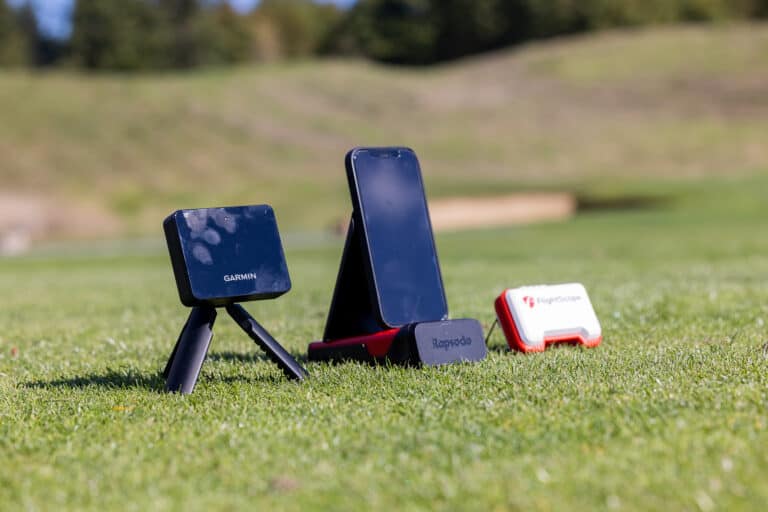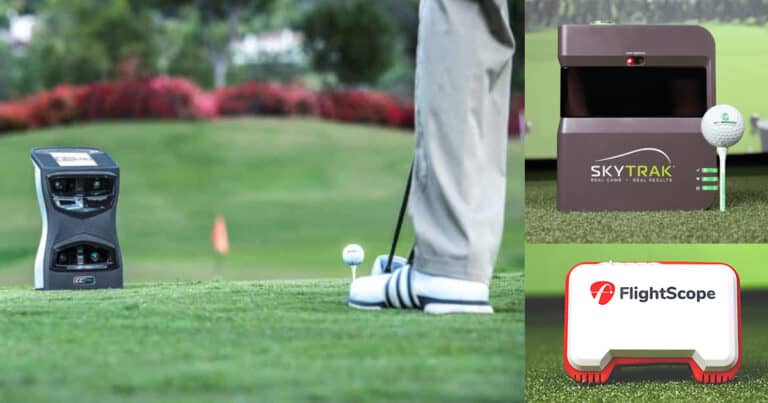Can a launch monitor be used for determining optimal club fitting?
Extrapolating the precise specifications for optimal club fitting is essential for any golfer looking to improve their game. Utilizing a launch monitor can provide valuable insights into club performance, such as ball speed, launch angle, spin rate, and shot dispersion. In this blog post, I will delve into the capabilities of a launch monitor and how it can be utilized to determine the best club fitting for your game. From understanding the key metrics to the role of club fitters, I will provide you with the necessary information to make the most of this advanced technology.
Key Takeaways:
- Precise Data Collection: A launch monitor provides accurate and comprehensive data on ball flight, club speed, launch angle, and spin rate, which is essential for determining optimal club fitting.
- Customized Recommendations: Utilizing a launch monitor allows for personalized club recommendations based on an individual’s swing characteristics, leading to better performance on the course.
- Improved Accuracy: By utilizing a launch monitor for club fitting, golfers can ensure that their equipment is perfectly tailored to their specific needs, leading to improved accuracy and consistency in their game.
Understanding Launch Monitors
Obviously, before we dive into the use of launch monitors for club fitting, it’s important to have a clear understanding of what they are and how they work. Launch monitors are devices used to track various parameters of a golf ball at the moment of impact, such as ball speed, launch angle, spin rate, and carry distance. These devices have become an essential tool for golfers and club fitters alike, providing valuable data for improving performance and optimizing club fitting.
Key Features and Sensor Technologies
When it comes to launch monitors, it’s crucial to consider the key features and sensor technologies that contribute to their effectiveness. Some of the key features to look for in a launch monitor include dual camera technology for improved accuracy,
Doppler radar for measuring ball flight, and multiple data points for a comprehensive analysis. Sensor technologies such as photometric systems and radar-based systems are commonly used to capture and analyze ball and club data. Perceiving the intricate details of these features and technologies can help you make an informed decision when choosing a launch monitor for club fitting purposes.
Accuracy and Precision in Measurement
When it comes to measuring performance and fitting golf clubs, accuracy and precision are of utmost importance. An efficient launch monitor should be able to provide highly accurate data on club and ball performance, including factors like ball speed, launch angle, and spin rate. Additionally, precise measurements of factors such as clubhead speed and angle of attack are essential for accurate club fitting. Ensuring that the launch monitor you choose offers reliable and consistent data is critical for the club fitting process.
The Role of Customization and Adjustability in Club Fitting
Assuming you are looking for the best club fitting experience, the level of customization and adjustability offered by launch monitors plays a crucial role. When it comes to optimizing your club performance, having the ability to customize and adjust various elements of your clubs can make a significant difference in your overall game improvement.
Whether it’s adjusting the loft, lie angle, or shaft options, launch monitors provide valuable data that can help you fine-tune and personalize your club fitting experience.
Interactivity and Responsiveness of Launch Monitors
One of the key factors to consider when using a launch monitor for club fitting is the interactivity and responsiveness it offers. The ability to quickly and accurately capture data such as ball speed, launch angle, spin rate, and more, is crucial in making informed decisions about your club fitting.
A launch monitor that offers real-time data and easy-to-understand feedback can greatly enhance the club fitting process, allowing for immediate adjustments and refinements to be made based on the data provided.
Balancing Performance and Customization
When it comes to optimizing your club fitting, it’s essential to strike a balance between performance and customization. While it’s important to focus on maximizing the performance of your clubs, customization and adjustability allow you to tailor your clubs to your specific swing characteristics and preferences.
Finding the perfect balance between performance and customization is where launch monitors truly shine, as they provide the necessary data to help you make informed decisions that cater to your individual playing style and needs.
Integrating Launch Monitors into Club Fitting
However, integrating launch monitors into club fitting has revolutionized the way golfers find their optimal club setup. As a certified club fitter, I have witnessed firsthand the impact of launch monitors on the fitting process. These advanced devices provide critical data on ball speed, carry distance, launch angle, spin rate, and more, allowing for a truly personalized fitting experience that takes individual swing dynamics into account.
Efficiency and Ease of Use in Fitting Sessions
One of the most significant benefits of using launch monitors in club fitting is the efficiency and ease they bring to the fitting sessions. With precise real-time data at your fingertips, the fitting process becomes streamlined, allowing you to make rapid adjustments and provide immediate feedback to the golfer. This not only saves time but also enhances the overall fitting experience.
Additionally, the ease of use of modern launch monitors makes them accessible to golfers of all skill levels, ensuring that anyone can benefit from a customized club fitting.
Compatibility and Interoperability with Various Clubs
Another crucial aspect of integrating launch monitors into club fitting is their compatibility and interoperability with various clubs. Whether you are fitting for drivers, irons, wedges, or putters, a quality launch monitor can provide the necessary data to optimize each club in the bag.
This level of versatility ensures that every club in your bag is tailored to your unique swing characteristics, maximizing performance across the board. Moreover, the ability to compare different club options on the spot allows for confident decision-making, leading to a more satisfying and effective fitting outcome.
Advanced Considerations in Launch Monitor Utilization
To fully maximize the capabilities of a launch monitor, there are several advanced considerations that should be taken into account. These factors can greatly impact the accuracy and effectiveness of the data provided by the launch monitor, and ultimately, its ability to determine optimal club fitting.
- Environmental factors
- Long-term reliability and maintenance needs
Portability and Versatility in Different Environments
One important consideration when utilizing a launch monitor is its portability and versatility in different environments. Whether you are fitting clubs for a professional golfer on the range, or a recreational player at an indoor facility, the ability to easily transport and set up the launch monitor is crucial. In my experience, having a reliable launch monitor that can effectively measure and analyze data in various settings is paramount.
Look for a model that is lightweight and easy to assemble, with the capability to adapt to different lighting conditions and environments. This will ensure that you can consistently gather accurate data regardless of where you are conducting club fittings.
Long-Term Reliability and Maintenance Needs
Another advanced consideration is the long-term reliability and maintenance needs of the launch monitor. Investing in a launch monitor is a long-term commitment, and it is essential to consider the upkeep and potential repairs that may be required over time. I have found that selecting a launch monitor with a strong track record of reliability and minimal maintenance requirements is crucial to ensuring consistent performance.
Be sure to research the manufacturer’s reputation for customer support and the availability of updates or servicing. Additionally, consider the warranty and support options available to protect your investment and minimize downtime due to maintenance issues.



